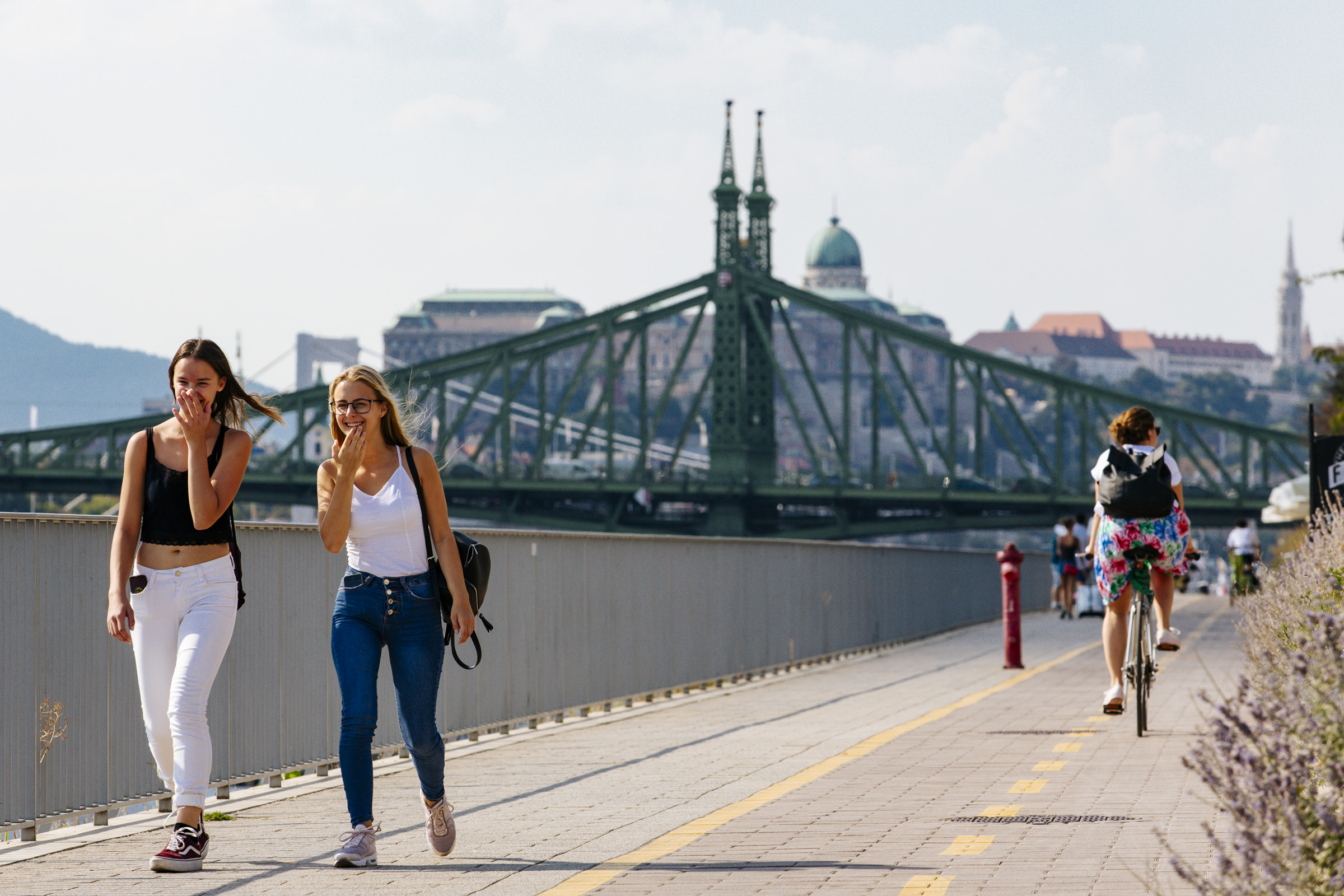District IX has many notable sights, such as the Great Market Hall on Fővám tér where locals go to buy seasonal produce, and tourists pick up Hungarian paprika. Constructed in 1897, it is the largest indoor market in Budapest, and its exterior is adorned with resplendent ceramic tiles from the famous Zsolnay factory in Pécs.
Just around the corner is the stately Corvinus University, whose Neo-Renaissance façade overlooks the Danube. Designed by one of Hungary’s most famous architects, Miklós Ybl, this was once the Main Customs House. The building sustained heavy damage in the war, as it was utilised as a stronghold by both German and Soviet soldiers.
Much more recently, Budapest residents saw another notable building erected along the Danube. Known as the Bálna, or Whale, this modern glass structure was designed by Dutch architect Kas Oosterhuis and connected old, deteriorating brick warehouses to create a gleaming new cultural, gastronomic and commercial centre. Cafés line the exterior, where pedestrians and cyclists enjoy the view, as well.
The riverbank is marked by Nehru Part, a renovated green space where locals come to skate, cycle and enjoy a beer in the summer.
Continue south, and eventually you come to the National Theatre and Müpa, which offer cultural events and performances of the highest quality to diverse audiences – it can all be found here.
The National Theatre was designed by Mária Siklós and debuted its inaugural performance on 2 January, 2002. It seats over 600 people, and its outdoor sculpture garden pays homage to the old National Theatre which once stood on Blaha Lujza tér. This structure was demolished under the Communist régime to install the metro.
It is also here that we find the headquarters of Zwack Unicum, Originally designed to be a medicine, Unicum is a bitter liqueur brewed from more than 40 different herbs and spices. Enter any Hungarian home and you’ll likely find a bottle or two!
Heading deeper into the city, District IX boasts a number of quiet streets with rows of terrace houses and cafés. The Museum of Applied Arts, currently under renovation, is the soaring masterpiece of Art Nouveau master Ödön Lechner. Originally opened in 1897, the building was initially met with scepticism, as critics found it too ornate. Today, however, it is seen as a national treasure.
Also in the district is the
Trafó House of Contemporary Arts, located in an old industrial building. In the
early 1990s, French anarchist artists discovered the abandoned structure and
housed many performances and concerts here. Eventually the City bought the building,
and in 1998 it opened its doors in its final form.
Nearby is the solemn
Holocaust Memorial Centre, established in 1999 in memory of the Hungarians who
were persecuted and murdered, including Jews and Roma.
District IX is also known as Ferencváros, and it would be impossible to talk about the district without mentioning its football team! A huge eagle sculpture greets spectators at the Groupama Aréna stadium, which usually fills with fans on game day. The enthusiasm is well-earned, as Ferencváros are Hungary’s record league champions and most popular club.
From football to terraces, Budapest’s 9th district attracts a wide range of visitors. While it might not be considered as trendy or popular as the inner districts, those in the know come here to enjoy arts, culture, sports and leisure activities in this vibrant and developing area of Budapest.




